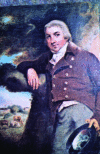Translational mini-review series on vaccines: The Edward Jenner Museum and the history of vaccination
- PMID: 17302886
- PMCID: PMC1810486
- DOI: 10.1111/j.1365-2249.2006.03304.x
Translational mini-review series on vaccines: The Edward Jenner Museum and the history of vaccination
Abstract
Edward Jenner's discovery of vaccination must rank as one of the most important medical advances of all time and is a prominent example of the power of rational enquiry being brought to bear during the Age of Enlightenment in 18th century Europe. In the modern era many millions of lives are saved each year by vaccines that work essentially on the same principles that were established by Edward Jenner more than 200 years ago. His country home in Berkeley, Gloucestershire, is where he carried out his work and where he spent most of his life. The building is now a museum in which the life and times of Jenner are commemorated including not only the discovery of smallpox vaccination but also his other important scientific contributions to natural history and medicine. The trustees of the Edward Jenner museum are committed to promoting the museum as a real and "virtual" educational centre that is both entertaining and informative.
Figures




References
-
- Bazin H. The eradication of smallpox. London: Academic Press; 2000.
-
- Baxby D. The Jenner bicentenary: the introduction and early distribution of smallpox vaccine. FEMS Immunol Med Microbiol. 1996;16:1–10. - PubMed
-
- Baxby D. Jenner and the control of smallpox. Trans Med Soc Lond. 1996;113:18–22. - PubMed
-
- Stewart AJ, Devlin PM. The history of the smallpox vaccine. J Infect. 2006;52:329–34. - PubMed
Publication types
MeSH terms
Substances
Personal name as subject
- Actions
LinkOut - more resources
Full Text Sources
Medical

